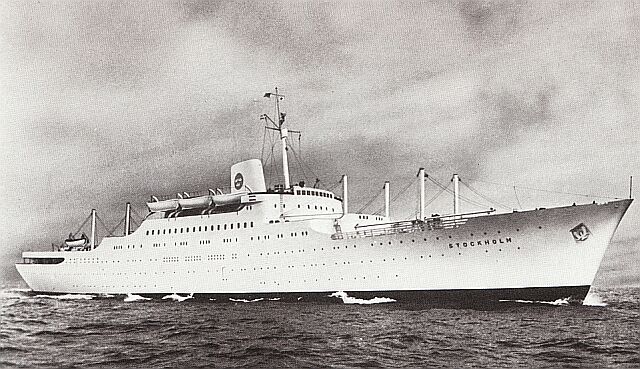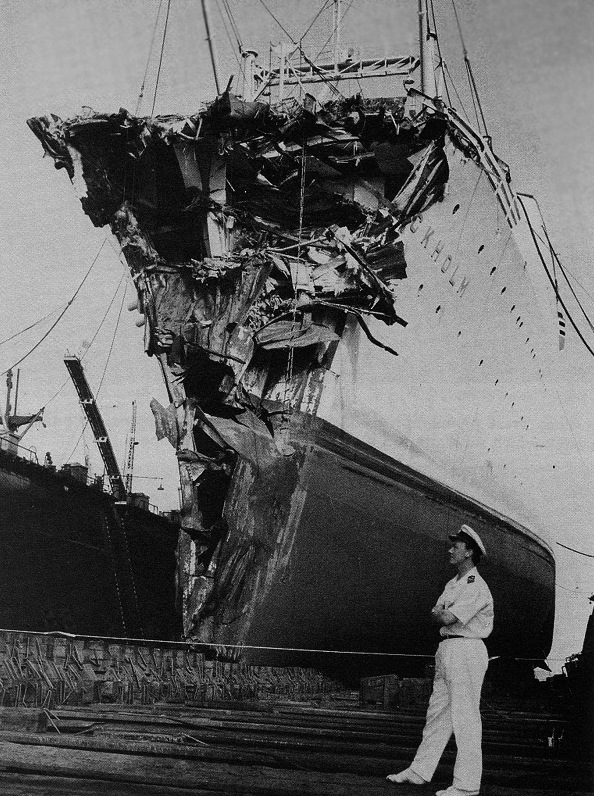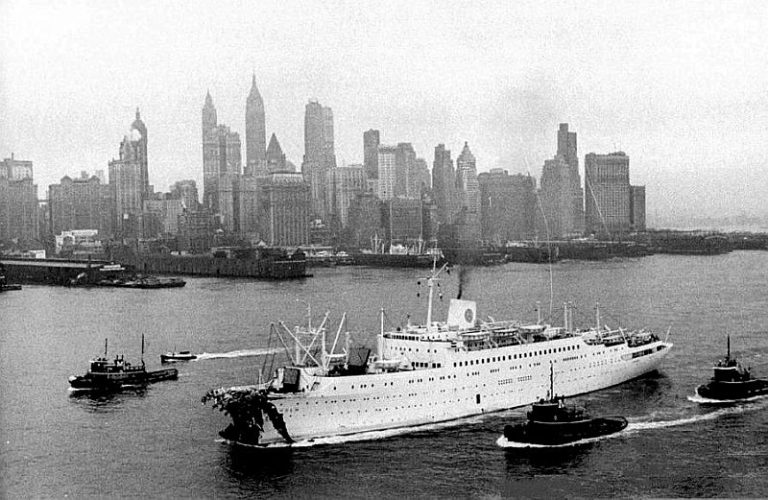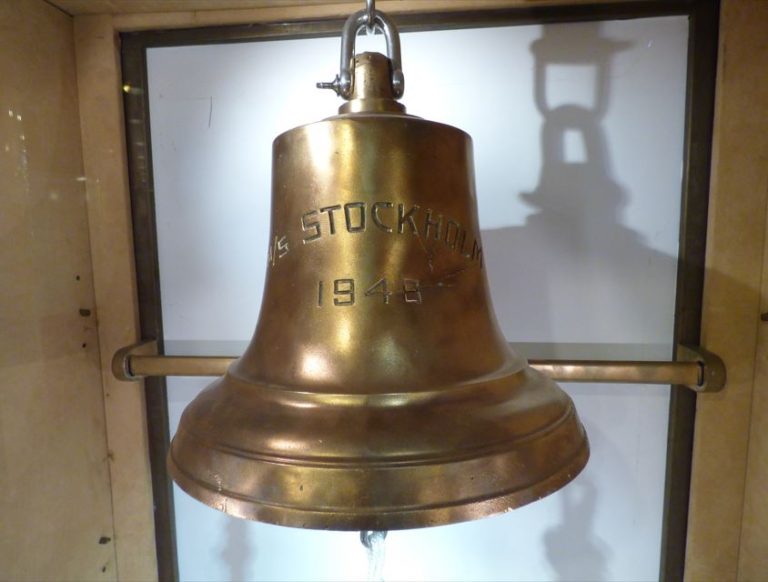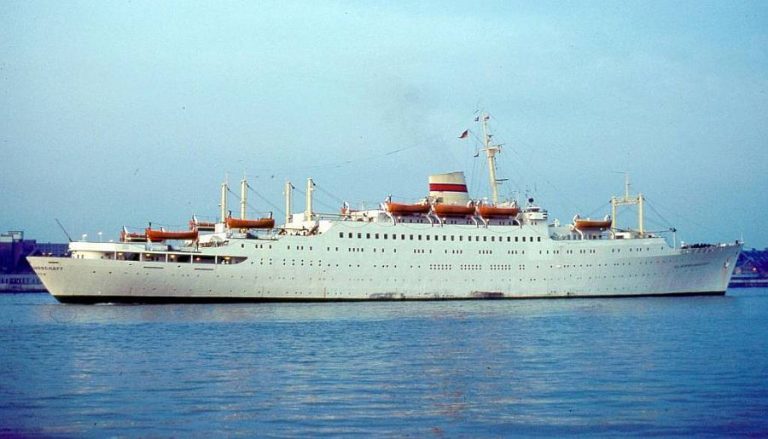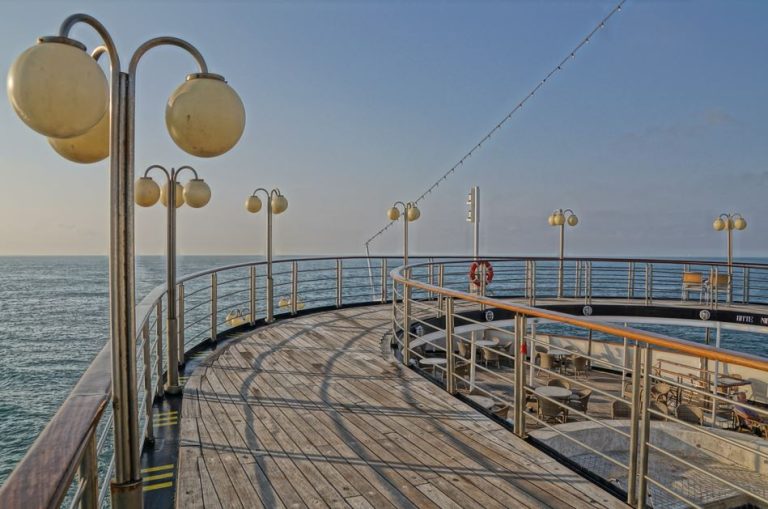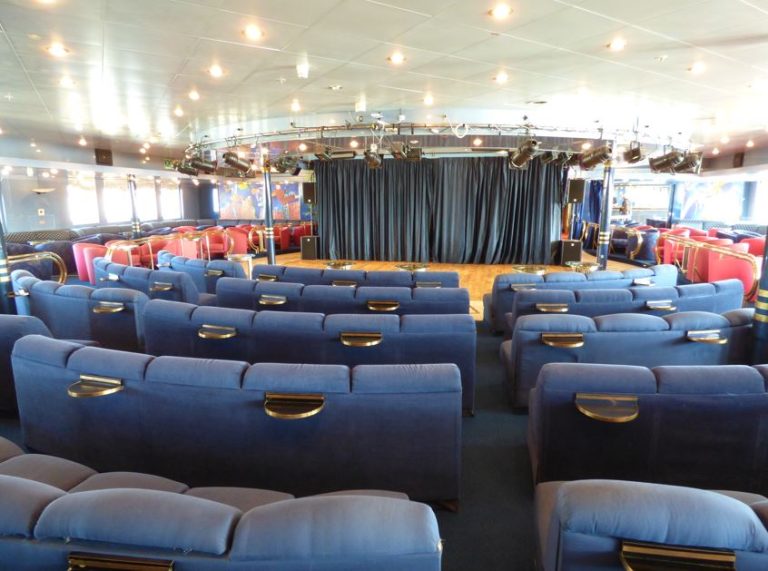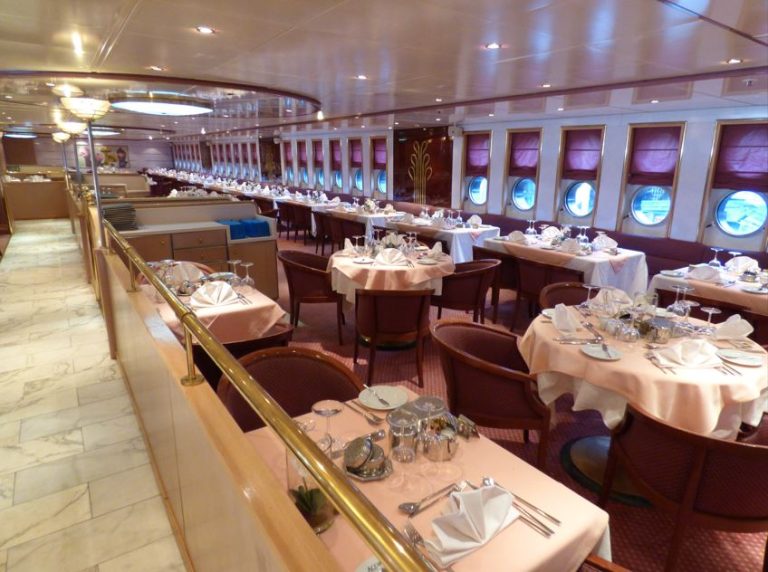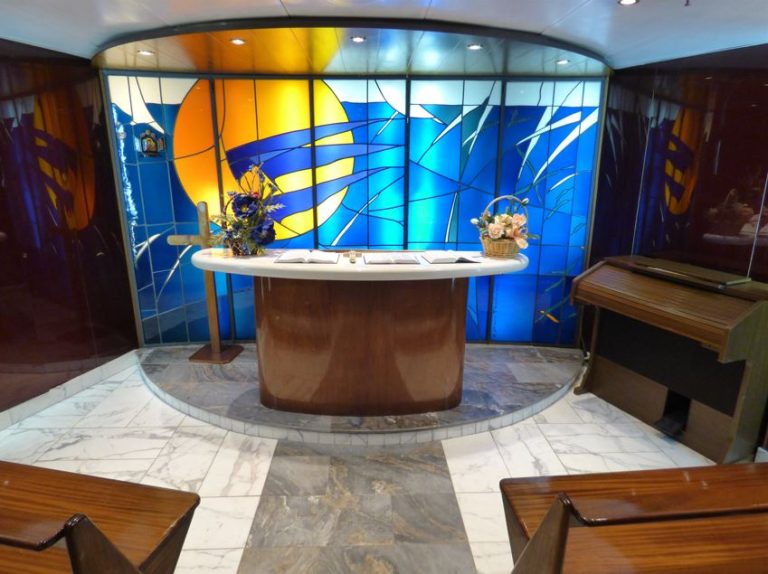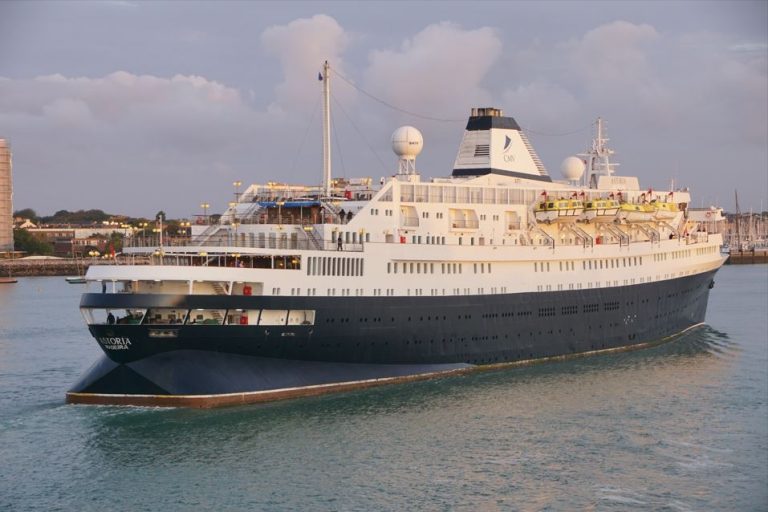From Stockholm to Astoria: 76 Years of Maritime History
“Everything’s fine on the Andrea Doria,” sang the German rocker Udo Lindenberg in 1974, and the line from the song became a colloquial way of asking how someone was doing in Germany at that time. The sinking of the Andrea Doria on July 26, 1956, is sometimes compared to the tragedy of the Titanic, although far fewer passengers perished, thanks in part to an immediate rescue operation. But what really happened, and why is this article not primarily about the Andrea Doria?
Stockholm
Stockholm
In 1951, launched for Italy – Società di Navigazione, internationally known as the Italian Line, the Andrea Doria, measuring 213.8 meters and with a tonnage of 29,083 GRT, was not only an exceptional example of Italian naval craftsmanship but also the largest, fastest, and seemingly safest Italian transatlantic liner of its time, a connection to great pre-war ships like the Conte di Savoia and the REX. On July 17, 1956, the ship named after Admiral Andrea Doria (1466-1560) set sail from Genoa for its 51st Atlantic crossing to New York. On board were 1,134 passengers and 572 crew members. Late in the evening of July 25, 1956, in thick fog off the coast of Nantucket, the Swedish ocean liner Stockholm collided with the Andrea Doria. Both ships were equipped with radar, but their efforts to avoid each other led to a collision course. The last-minute attempts by the crews of both vessels to avoid impact failed, and the two ships collided almost at a 90-degree angle, with the reinforced bulb of the Stockholm striking the starboard side of the Andrea Doria, cutting it up to 12 meters deep.
The Italian ship, contrary to the myth of its particular safety, actually had poor stability characteristics and began taking on water rapidly. In the collision, 46 people lost their lives, many of whom were sleeping in their cabins on the Andrea Doria when the bulb of the Stockholm struck the ship. Five crew members from the Swedish vessel also died in the incident. Although the lifeboats of the Andrea Doria could not be launched from the promenade deck due to the severe listing and had to be lowered into the water empty at first, 1,660 people on board survived the incident. In addition to the Stockholm, which was severely damaged at the bow but still floating and maneuverable, other ships participated in the rescue operation, including the legendary Île de France of the Compagnie Générale Transatlantique, also known as the French Line. Eleven hours after the collision, the Andrea Doria sank. The bow of the Stockholm had been torn away during the impact and sank into the Atlantic, along with the ship’s bell, which was later recovered and has been on display again since 2015.
Stockholm
Stockholm Bell
The Stockholm was ordered in 1944 by Svenska Amerika Linien (Swedish American Line) from Götaverken in Gothenburg, Sweden, for transatlantic service. This functional ship could accommodate only 395 passengers in two classes and measured 160.1 meters with a tonnage of 12,165 GRT. On February 21, 1948, the Stockholm set sail from Gothenburg for its first Atlantic crossing, which concluded in New York on March 1, 1948. Five years after entering service, the passenger capacity was increased to 548 people through the addition of extra cabins on Deck A. From 1952, the Stockholm operated the North Atlantic route alongside the larger and significantly faster Kungsholm, and after Svenska Amerika Linien ordered the Gripsholm in Italy for delivery in 1957, it was clear that the days of the Stockholm in regular service were numbered. After the incident with the Andrea Doria, the ship was initially repaired at the Bethlehem shipyards in New York. In 1959, the Stockholm was sold to an unnamed German buyer, with delivery expected the following year.
On January 3, 1960, the German Democratic Republic (GDR) took over the ship and renamed it Völkerfreundschaft. In the future, it was to operate subsidized vacation trips for “deserving workers” as part of the holiday service of the Free German Trade Union Federation (FDGB). The concept was similar to the “Kraft durch Freude” travel programs during the National Socialist period in Germany, although the GDR would have certainly rejected such a comparison. The former two-class ship could now accommodate 568 passengers in a single class. With the Völkerfreundschaft and the newbuild Fritz Heckert, which was launched in 1961 in Wismar, the FDGB holiday service expanded its offerings beyond holiday villages, campsites, and other facilities. In addition to cruises that called at socialist countries, the ships also served as sources of foreign currency and were, like many Soviet passenger ships, used for charter trips by Western organizers. Members of the Ministry for State Security, the infamous secret service of the GDR, were always on board. However, in April 1968, a passenger managed to escape to the West, jumping overboard during a trip in the Baltic Sea and being rescued by a West German naval ship that had been alerted in advance through contacts. After the decommissioning of the Fritz Heckert after just eleven years, the Völkerfreundschaft remained the only holiday ship of the GDR until 1985, when the GDR acquired the relatively young ASTOR, known from the West German television series “Das Traumschiff,” from its South African owners, renaming it Arkona.
Stockholm-Volkerfreundschaft
In the same year, the Völkerfreundschaft was sold to Neptunus Rex Enterprise and renamed Volker, being laid up. The following year, it was renamed Fridtjof Nansen and used as accommodation for asylum seekers in the port of the Norwegian capital, Oslo. However, what might seem like the last stage of a nearly 40-year naval life was far from the end for the former Stockholm. The shipping company StarLauro acquired the ship in 1989 to convert it, starting in 1992, into a modern cruise ship under the direction of architect Giuseppe de Jorio. It is ironic to think that the ship that sank the pride of the Italian merchant fleet in 1956 would, decades later, become an elegant Italian passenger liner. The conversion took place during a period when such major restructurings of existing ships were not at all rare in Italy and Greece. Consider the transformation of the cruise ships Costa Marina and Costa Allegra, which had been container ships for decades, the conversion of the ferry SUN FIESTA into the Regent Jewel/Calypso in Greece, or the completion of the planned Russian satellite research vessel Akademik Nikolay Pilyugin as the luxurious cruise ship Seven Seas Navigator.
From its construction, the Stockholm was distinguished by elegant yacht-like lines, setting it apart from many liners of its time. Svenska Amerika Linien had agreed, after lengthy negotiations within the company board, to build a functional, low-glamour ship with a modern diesel engine and relatively low speed. During the renovation in Genoa, only the hull remained, which was also stripped down—along with the two main 8-cylinder engines produced by the yard. In their place, the ship received two Wärtsilä 16V32 diesel engines. The new superstructures gave the ship, aside from the aforementioned extension of Deck A, a completely modified silhouette. This appeared more boxy and modern, although an unsightly lift body (“Ducktail”) was added at the stern for stabilization purposes.
External Deck
Show Lounge Calypso
Restaurant Olissipo
Chapel
The high-quality interior design combined Italian marble, chrome accents, and mirrored surfaces to create an elegant look typical of the era, making the most of the limited space on the small ship and enhancing features such as a two-story foyer with its curved staircases. Speaking of spaces, the renovated cabins were spacious, particularly their bathrooms. In addition to the main restaurant, the ship, initially renamed Italia I in 1993 and then Italia Prima the following year, also had a buffet restaurant, a show lounge, an auditorium, a nightclub, and several bars. Typical of an Italian ship was the presence of a small chapel. Naturally, the amenities included a casino, a library, a card game room, a shop, a fitness area, and a beauty salon.
Under the management of NINA Spa, Italia Prima set sail on October 31, 1994. The following year, the German tour operator Neckermann Seereisen chartered the ship as part of a planned five-year rental contract. However, Neckermann terminated the charter early in 1998, after which Italia Prima was initially laid up in Genoa and later served as a accommodation ship during Expo 98 in Lisbon. In September 1998, a planned five-year charter began with Valtur Tourist, which offered cruises in the Caribbean starting from Cuba. The marketing of the ship, now called Valtur Prima, was handled in Germany by Air-Maritime Seereisen. After Valtur’s bankruptcy in 2001, the ship remained laid up in Havana, and the following year it was purchased by Festival Cruises to continue operating cruises in Cuba under the name Caribe. After the collapse of Festival Cruises in 2004, George P. Potamianos acquired the ship for his company Classic International Cruises (CIC). Following renovations, the former Stockholm returned to the seas in 2005 under the name Athena. CIC not only employed the ship but also chartered it to other operators. Thus, in 2007, the Athena made its return to the German market, being used by Vivamare Vacanze. In 2009, it was called upon to replace the Alexander Von Humboldt for Phoenix Reisen for five months. George P. Potamianos passed away in the spring of 2012 and did not witness the collapse of Classic International Cruises in the fall of that same year.
von-der-stockholm-zur-astoria-76-jahre-geschichte
The newly established shipping company Portuscale Cruises, founded by entrepreneur Rui Alegre, acquired the four inactive CIC ships in 2013, after which the Athena was renamed AZORES. Interestingly, Portuscale Cruises often used the spelling “Acores,” even though the official name of the ship included a Z. In 2014, the Azores returned to the German market, this time for Ambiente Kreuzfahrten, a tour operator associated with the German Social Democratic Party (SPD). In 2015, the British tour operator Cruise & Maritime Voyages (CMV) chartered the ship, which began operating under the name Astoria in 2016. It was also periodically in service for the French operator Rivages du Monde. In 2020, the Astoria was expected to have its final season with Cruise & Maritime Voyages, but the COVID-19 pandemic prematurely ended this venture. CMV did not survive the pandemic, nor did its owner Portuscale Cruises. In December 2020, the Astoria was towed to Rotterdam, where it remains inactive to this day. In July 2021, The Roundtable LLC, a company owned by American cryptocurrency billionaire Brock Pierce, purchased the ship with the aim of bringing it back into service. Since then, little has happened. In November 2023, Dutch adventurer Bob Thissen, known for his videos on so-called “Lost Places,” published an illegally filmed video tour of the abandoned ship on his YouTube channel, which appeared to be partially dilapidated and covered in mold.
For the former Stockholm, an alternative to imminent demolition remains, or will the story of this nearly 77-year-old ship come to a swift conclusion? Only time will tell. It should also be noted that the Astoria is often referred to as the world’s oldest “active” ocean cruise ship. Even when it was still operational, this was true only when excluding the large sailing vessel Sea Cloud, built as a private yacht in 1931 and converted into a cruise ship in 1978. However, the former Stockholm is one of the last remaining transatlantic liners, although today it has very little in common with the hull launched on September 9, 1946, in Gothenburg.
Stay tuned for news, updates, and reviews from the world of cruising on Cruising Journal.

